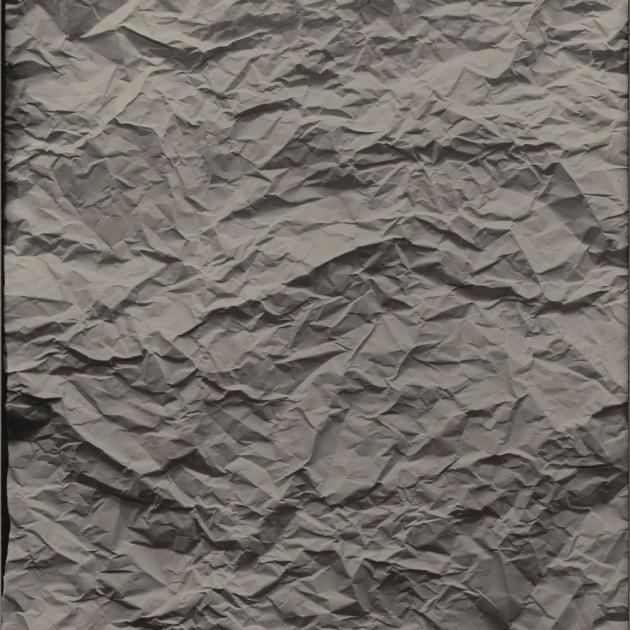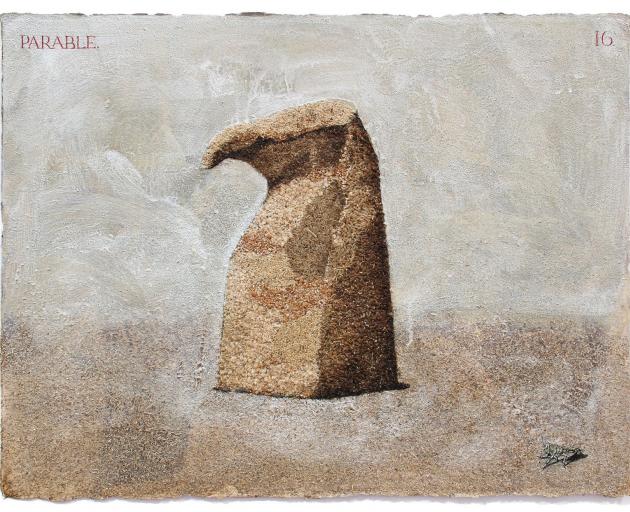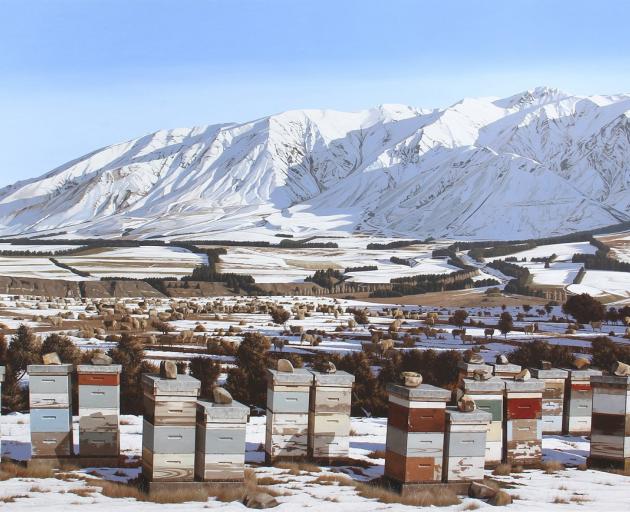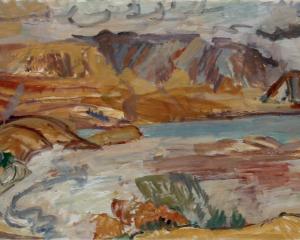In this week's Art Seen, Robyn Maree Pickens looks at works by Ben Cauchi, Michael Shepherd, and Michael Hight.
 ‘‘The Waters of Lethe’’, by Ben Cauchi.
‘‘The Waters of Lethe’’, Ben Cauchi (Brett McDowell Gallery)
‘‘The Waters of Lethe’’, by Ben Cauchi.
‘‘The Waters of Lethe’’, Ben Cauchi (Brett McDowell Gallery)

Ben Cauchi, a New Zealand artist at present living in Berlin, is this country's foremost practitioner of 19th-century photography and processing.
He works with 100-year-old wooden and brass cameras that weigh 8kg, and has more recently had a larger camera, nicknamed ''the Behemoth'', made.
The key difference with mid-19th-century cameras, and the rationale behind ''the Behemoth'', is that the size of the plate inserted into the camera is the size of the finished product.
There is no other capacity for enlarging, and Photoshop is nowhere in sight. The inserted plate is a direct positive; that is, the finished image is at once image and object. There is no negative.
The eight photographic works in ''The Waters of Lethe'' are therefore eight slender windows of glass which, to use more familiar (yet pre-digital) terminology, enfold both the negative and the positive image.
In bald terms the subject of each work is a piece of paper which is variously crumpled, folded, creased, rustled, indented. But such a description belies potential topographies of the mind; lunar visitations; soil strata; mountains viewed from a plane.
Or, following the Greek origin of the word ''lethe'', these works are sites of oblivion, forgetfulness, the mind a clear palette for reincarnation: palimpsests of possibility.
 Parable, by Michael Shepherd.
‘‘Pict (Painted Ones)’’, Michael Shepherd (Milford Galleries)
Parable, by Michael Shepherd.
‘‘Pict (Painted Ones)’’, Michael Shepherd (Milford Galleries)

With his latest exhibition, ''Pict (Painted Ones)'', Auckland artist Michael Shepherd presents a coherent body of 20 paintings that offer an ecological commentary on the Otago landscape.
It is tempting to read, in these dun and ochre paintings, the arid, scorched tussock lands of Central Otago, or the grain belts of North Otago and Canterbury.
Certainly, titles such as McKenzies Theft/Long Awned Seed Flown (2015), Bannockburn (2015) and Scat/McCraes Grass Scattered (2015) indicate a situated geographical intentionality.
I say ''indicate'' because these paintings purposely detach or attenuate themselves away from a straightforward identification with the specific places of their titles.
In each painting the air is thick with dust, chaff and the threat of biblical locusts. There are no clear blue skies, no radiating sun to account for these blasted, razed, quasi-apocalyptic landscapes.
Shepherd incorporates actual grass, straw, seed heads, seeds and cereal grains into the texture of the paintings, to literalise the deforestation undertaken for grain production in early colonial Aotearoa-New Zealand.
A contemporary commentary on the proliferation of dairy farming is evident in Spilt Milk/Blessed Thistle Tea (2015), which depicts a disproportionately large milk carton sitting in a lake of milk.
Shepherd's environmental message avoids didacticism, with pleasing formal compositions, and the presence, in some paintings, of wry or whimsical objects.
 Middle Rock Station, by Michael Hight.
‘‘New Works’’, Michael Hight (Milford Galleries)
Middle Rock Station, by Michael Hight.
‘‘New Works’’, Michael Hight (Milford Galleries)

Michael Hight is renowned for his ultra-crisp, photorealist style of painting, which has its genealogical roots in the hard-edged realism forged by New Zealand artist Rita Angus and the American photorealism of the late 1960s-1970s.
Like Angus, the primary subject of Hight's oeuvre is the New Zealand landscape, particularly the pared back, unadorned hinterland, and mountain ranges of Otago and the Mackenzie Country.
It is these landscapes replete with Hight's signature motif - clusters of beehives - that comprise his latest exhibition, ''New Works''.
Hight's beehives are noteworthy for a number of reasons. From a formalist perspective, the stacked beehives act as a compositional anchor.
Generally situated in the foreground, the cluster of beehives form a pattern which, in the instance of Middle Rock Station (2016), is reiterated in the rough shapes of paddocks delineated by shelterbelts in the middle ground beyond.
Standing like totems, stellae or henges, Hight's beehives are reminiscent of the minimalist works of Donald Judd, particularly Judd's wall-mounted stacks made from metal and plexiglass.
Despite the hyperrealist style, Hight's deployment of the beehives as formal, sculptural entities is underscored by the ratio of beehives to relative pollen availability in such landscapes.
Hight's motif and the sheer quantity of beehives take on a new poignancy in relation to colony collapse disorder.









![Untitled (c. mid 1990s, [pink 3]), by Martin Thompson, 415mm×590mm. Photo: courtesy of Brett...](https://www.odt.co.nz/sites/default/files/styles/odt_landscape_small_related_stories/public/story/2024/02/untitled_pink_3.jpg?itok=Q0aQrc9o)


